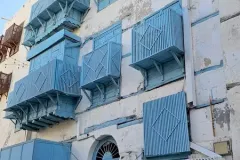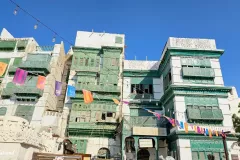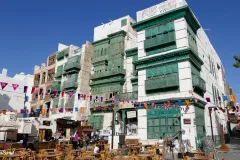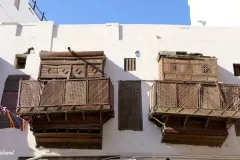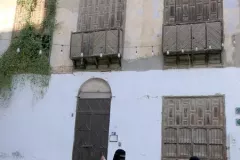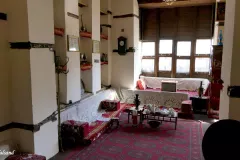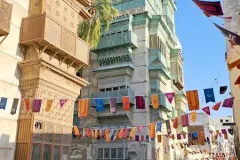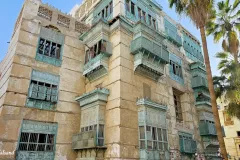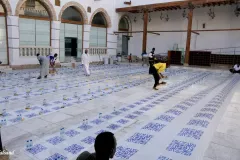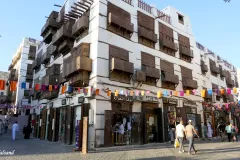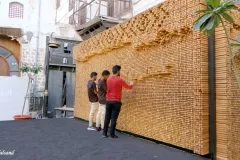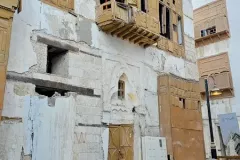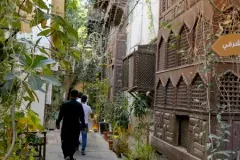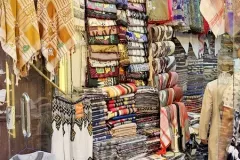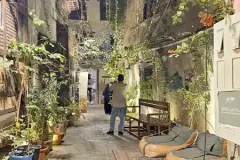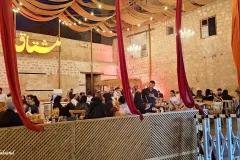Jeddah on the shore of the Red Sea was for centuries the gateway for seafarers on Hajj to Mecca, the most holy city of Islam. The old part of Jeddah has maintained its charm.
The UNESCO World Heritage List includes over a thousand properties. They have outstanding universal value and are all part of the world’s cultural and natural heritage.
Official facts
- Official title: Historic Jeddah, the Gate to Makkah
- Country: Saudi Arabia
- Date of Inscription: 2014
- Category: Cultural
UNESCO’s World Heritage Centre’s short description of site no. 1361:
Historic Jeddah is situated on the eastern shore of the Red Sea. From the 7th century AD it was established as a major port for Indian Ocean trade routes, channelling goods to Mecca. It was also the gateway for Muslim pilgrims to Mecca who arrived by sea. These twin roles saw the city develop into a thriving multicultural centre, characterized by a distinctive architectural tradition, including tower houses built in the late 19th century by the city’s mercantile elites, and combining Red Sea coastal coral building traditions with influences and crafts from along the trade routes.
More about it
What is now the old town, Al-Balad, has its roots in the 7th century and served historically as the centre of Jeddah. As the country and its citizens prospered in the last half of the 20th century people started to move out. Offices and commercial buildings as well as residential quarters started to fall into decay. That was of course a tragedy. Al-Balad consists of a number of imposing tower houses decorated by large wooden Roshan windows and balconies for the most part built in the late 19th century by the city’s mercantile elites. There were also lower coral stone houses, mosques, suqs and small public squares that together composed a vibrant space.
Preservation efforts started in the 1970s, UNESCO enlisted the area on its World Heritage List in 2014, and the Saudi government is very keen on preserving the architectural heritage and urban life. A number of the old buildings have been restored, and many are on the list to be saved for future generations. Fortunately, the old town is closed for all motorised vehicles, save a few electric ones. The Saudi government has vowed to make Old Jeddah a major international tourist destination.
My visit
Jeddah was my final destination on a journey across the Arabian peninsula in 2024. I arrived here from the second most holy town of Islam, Medina. The continuation on to Mecca from Jeddah is only a short hour drive, but alas, it is off limits for non-muslims. In any case, Jeddah is still very much a major destination in this country even for visitors not on a pilgrimage to Mecca.
Like so many cities in the rapidly developing nation, it is bustling with modern hotels, malls, wide avenues, and it even hosts the Formula 1 circus once a year. Just off the corniche the world’s tallest fountain bursts its water around 300 metres into the air – a magnificent sight.
Still, the most memorable part of Jeddah remains the old town, Al-Balad. I was part of a group and we walked slowly through the area in broad daylight. Presumably because this was in the month of Ramadan, we had the streets almost to ourselves. I returned on my own that same evening and it was a totally different experience. It seemed as if the entire urban population of Jeddah had gathered in the narrow streets, to sip soft drinks, watch other people, do some light shopping, or relax with a hookah (waterpipe).
A bonus
I would also like to mention the Tayebat museum. It is a privately owned (obviously a very rich individual) and housed in a very large palace complex. The exterior of the complex is a marvel in its own right. It has the same visual appearance as we find in the old town. The museum is however located north of it. Inside it has everything you would want to know about Jeddah, the country, the kingdom, and its culture. It is huge and spans several hundred rooms with thousands of objects, posters, artwork and more.
Find more articles from Saudi Arabia here on Sandalsand, including other World Heritage Sites.



